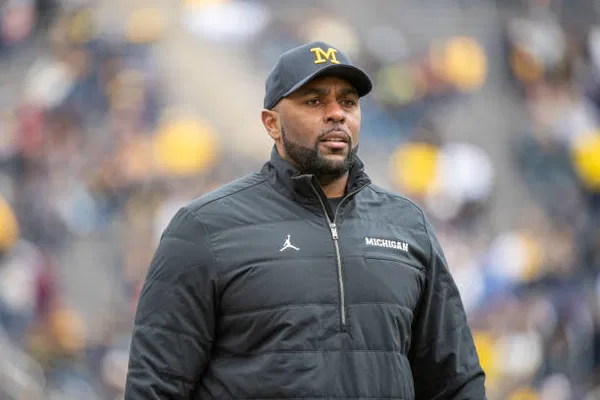
The landscape of college football shifts rapidly, and Michigan’s recent trajectory is a prime example. One moment, they were national champions; the next, their head coach, Jim Harbaugh, left for the NFL, leaving the program in a state of uncertainty. Sherrone Moore, now at the helm, had to manage a team undergoing major transitions in an era where Name, Image, and Likeness (NIL) deals dictate recruiting battles. However, despite having financial resources, Michigan’s struggles proved that money alone can’t guarantee roster stability or success.
Michigan’s Challenges Post-Harbaugh
Harbaugh’s departure set off a domino effect. The Wolverines lost their starting quarterback, running back, and several key players to the NFL. Compounding the issue, Michigan was slow to adapt to the transfer portal, leaving Moore with a depleted roster. The quarterback position became a revolving door, with Davis Warren, Alex Orji, and Jack Tuttle failing to provide consistent play. The offense struggled significantly, ranking 113th in scoring at just 22 points per game. The passing game was particularly poor, managing only 1,600 yards with a touchdown-to-interception ratio of 12:13. The running attack was also underwhelming, ranking 80th nationally. Given these issues, the fact that Michigan still finished 8-5 is remarkable.
Charles Woodson’s Support for Sherrone Moore
Despite a tough season, Michigan legend Charles Woodson believes Moore deserves credit. “He did a great job of just keeping the team together and finishing on a strong note,” Woodson remarked. He acknowledged the team’s offensive struggles and quarterback instability but emphasized the resilience Moore instilled in his players. Woodson also highlighted Michigan’s strong finish, which included a victory over Ohio State and a bowl win against Alabama.
NIL Money: A Blessing or a False Hope?
Michigan entered the 2024 season with an NIL budget between $20-30 million, yet they struggled to land top-tier talent. The assumption that financial resources alone would keep the roster strong proved false. Even with significant NIL backing, Michigan struggled to attract elite four- and five-star recruits, exposing the limitations of NIL in securing a top-tier roster.
Adding to Michigan’s woes, injuries to key players such as Will Johnson, a projected top-five NFL draft pick, further hindered their performance. The loss of championship-caliber players like J.J. McCarthy, Blake Corum, and Roman Wilson left gaps that weren’t adequately filled.
Michigan’s Bright Spots
Despite the adversity, Michigan ended the season on a high note. They defeated Ohio State in Columbus and followed it up with a gritty win over Alabama in the ReliaQuest Bowl. Off the field, Moore managed to flip Bryce Underwood, the No. 1 quarterback recruit in the 2025 class, from LSU—a significant recruiting win.
The $50 Million NIL War Chest for 2025
Determined to turn things around, Michigan is now armed with a $50 million NIL budget, thanks to billionaire Larry Ellison’s investment. This increased funding has already paid dividends, with Michigan securing a No. 6-ranked recruiting class featuring five-star offensive linemen Andrew Babalola and Ty Haywood. They also bolstered their roster via the transfer portal, adding Fresno State quarterback Mikey Keene, Alabama running back Justice Haynes, and several key linemen.
The Oregon Comparison
Despite Michigan’s increased NIL funding, Oregon has been even more successful in talent acquisition. With a smaller $23 million NIL budget, head coach Dan Lanning has turned the Ducks into a recruiting powerhouse. Thanks to strategic efforts and the backing of Nike co-founder Phil Knight, Oregon continues to outmaneuver programs with larger financial resources, proving that NIL alone doesn’t determine recruiting success—coaching and program culture play a massive role.
The Road Ahead
For Michigan, 2025 is about proving that their investments will yield results. The financial backing is there, but execution on the field will determine whether Moore can keep Michigan in championship contention. Another disappointing season would raise serious questions about whether money is being effectively used to build a true title contender. The upcoming season will be a defining moment for Moore, Michigan’s NIL strategy, and the program’s long-term direction.